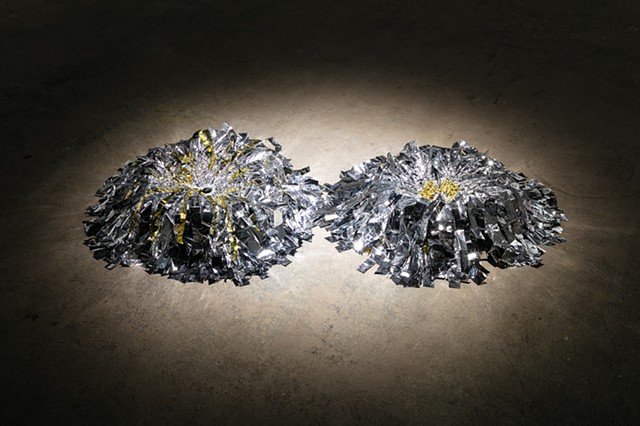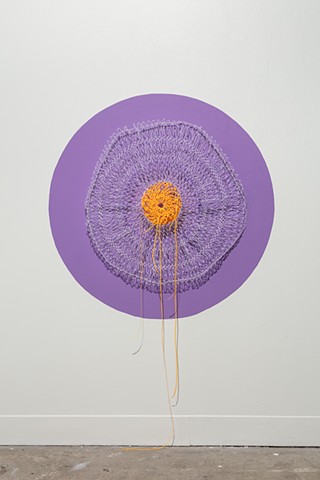Shine/Shrink
The Story of Your Eye
Annette Lepique
The pulse of the heart matches the throb of the sphincter. Desire’s shadings envelop your memory like a veil; it’s that beautiful ache, that shimmering ectoplasm that lives in your eyes like love. This contraction, a moment of boundlessness and collapse, finds its home in muscle, blood, and bone. Nothing ever stays the same, but this possibility of transformation, of flight, of fire, makes you a romantic at heart.
A hole yearns.
The light lies different in Los Angeles. The city is a place of myth, where pearls of warm sap crown your thighs, and bougainvilleas wind tight around your throat. You always return, for it is the only place that is real. Myths after all tell us how we can live. Once upon a time your body, your wanting, your passion were given shape and form amidst life’s static. Do you remember what it feels like to wake up? To get what you never knew you needed? To feel devastatingly alive? “I desire, therefore I exist”, said the lovers of Angela Carter’s War of Dreams (1972).
A hole is a blessing.
In psychoanalyst Suely Rolnik’s work, she writes about the need to return to one’s body and one’s desire in order to decolonize one’s mind. What is it that you truly want? How can you find, feel, touch, and taste freedom? These forms of knowing, making, and creating are the erotic material of life. Limits are not static, neither are possibilities. Where will you go when you are pushed beyond everything you once knew; when the thunder of love loosens your limbs and long-forgotten language falls from your mouth like the peal of the moon’s silver bells? Pleasure finds its home in you.
A hole is always full.
José Santiago Pérez’s SHINE/SHRINK is a topography that shifts and changes. SHINE/SHRINK is a maze, a hall of mirrors, and a love letter to the body’s capacity for pleasure and connection, and for transformation amidst trauma. The titles of the works, like “Sunset Crescent” and “Normandie Fountain”, are taken from intersections and landmarks in Los Angeles the artist remembers as being near sites of transformative sexual encounters during the city’s early response to the AIDS crisis. The sites themselves can never be explicitly named for they live in the artist’s memories. This very inarticulation is what lies at the heart of desire. Desire cannot be named, it can only be endlessly circled.
A hole is a world unto itself.
With mylar pulsing, enveloping, contracting, and expanding around a central negative space, Pérez models his pieces as “embellished voids”. This space is the work, the center, the constellation of electricity that lives in your heart. The pieces themselves are positioned at various vantage points; they radiate outward like ground-dwelling stars and reach beseechingly from the gallery walls like glory holes or passion-struck saints in the Devotions of the Cross. Pérez asks you to get on your knees; it is only here you can really listen, see, and get to the heart of things.
A hole opens achingly wide.
A cenote is a natural sinkhole with exposed groundwater, a hole that forever expands. The word originated in Mexico’s Yucatán Peninsula as cenotes were places that Mayan civilization considered to be holy: sites of beginnings and ends.
Welcome to the void. See how it shines.
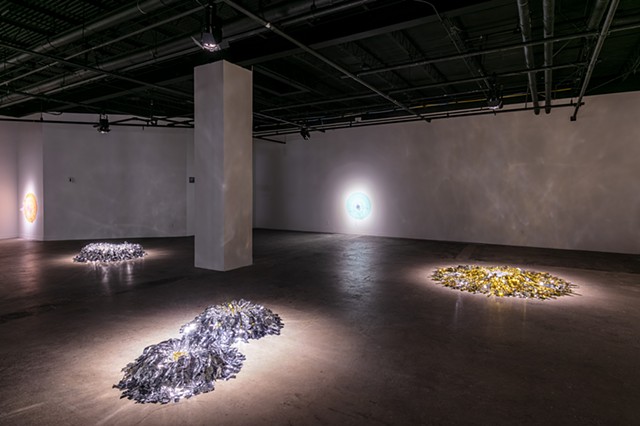
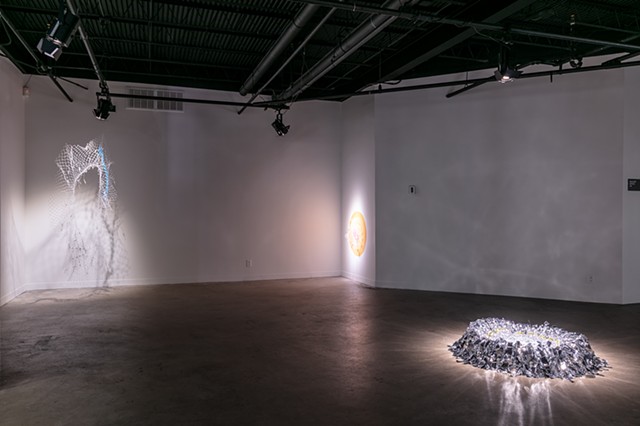
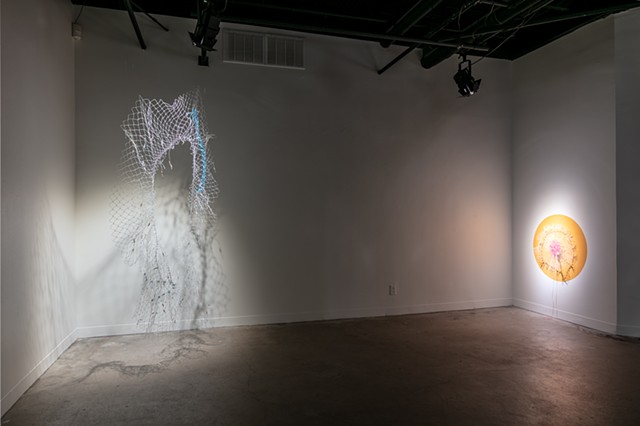
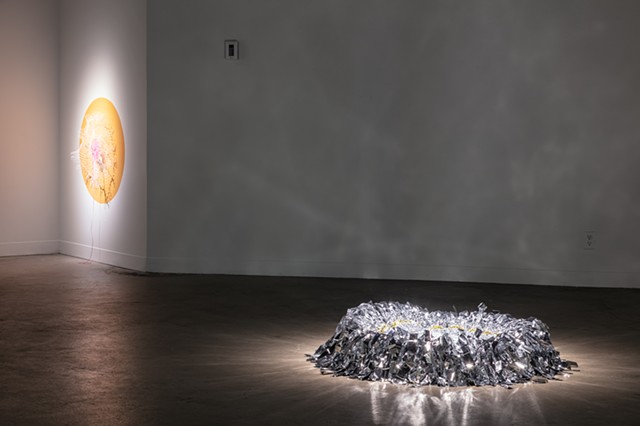
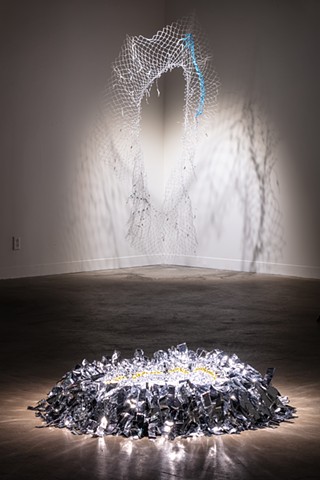
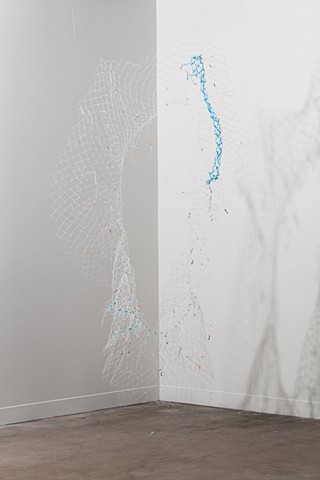
![NetWork 9296 [detail]](http://img-cache.oppcdn.com/fixed/56862/assets/5va_dIRexFPyu9Km.jpg)
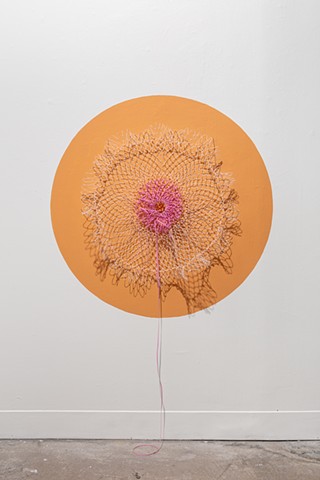
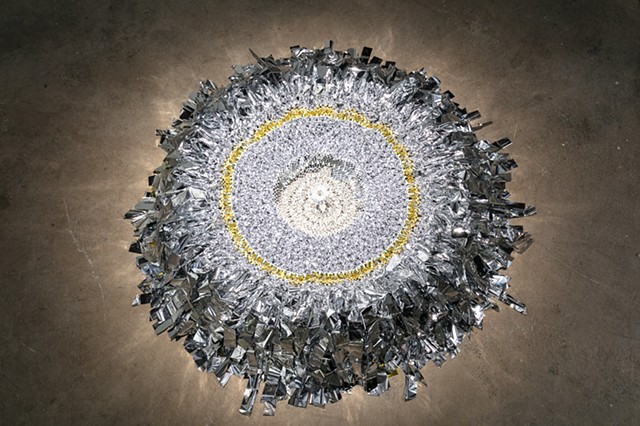
![Franklin Commonwealth [detail]](http://img-cache.oppcdn.com/fixed/56862/assets/_nFsTFPn_mF1gP0V.jpg)
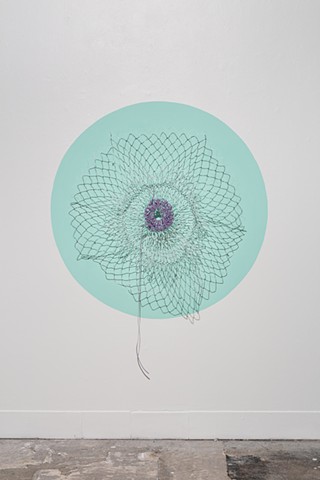
![Lavender Portal (zip fly)[detail]](http://img-cache.oppcdn.com/fixed/56862/assets/itf3_ltEhUVbQid7.jpg)
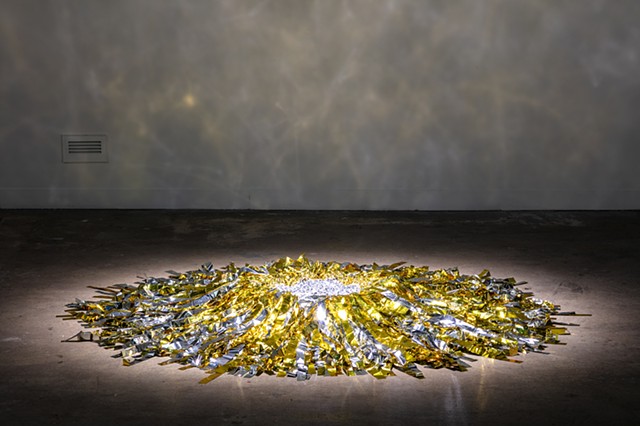
![Sunset Crescent [detail]](http://img-cache.oppcdn.com/fixed/56862/assets/KtKr2BPUHr9caBxl.jpg)
